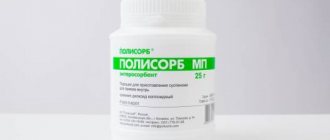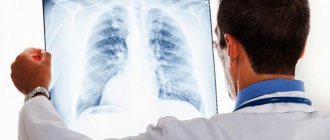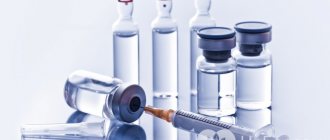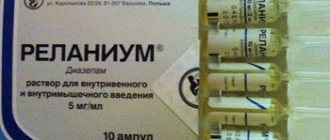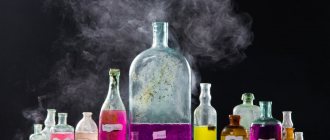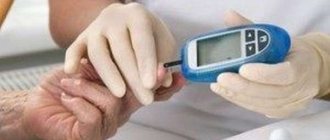Classification of acute poisonings
In medical practice, such disorders are classified taking into account the cause and characteristics of the development of gastrointestinal problems. Next, we will briefly talk about what the most common types of poisoning are.
- Household. Caused by drug use and abuse of alcohol and even alcohol.
- Agricultural. In this case, a person may become poisoned by fertilizers or drugs used to kill pests.
- Production. Emergency situations at enterprises lead to the entry of toxins and poisons into the human body. In this case, the most pronounced health problems are noted. Gas poisoning is considered one of the most dangerous.
- Medical. Poisoning occurs due to the mistake of medical personnel who incorrectly prescribed drugs to the patient or allowed an overdose.
- Food. The source is low-quality food or drinks.
In any case, emergency first aid for acute poisoning must be provided in a timely manner and according to a specific scheme for subsequent successful treatment and recovery.
Causes and features of the symptomatic picture
Acute poisoning occurs for the following reasons:
- accidental consumption of hazardous foods or drinks;
- deliberately causing harm to oneself;
- poor environmental conditions;
- careless handling of household or industrial items;
- inattention in matters of safe catering.
Symptoms can be divided into several groups of syndromes, but in any case they are a consequence of intoxication. All symptoms are divided into syndromes, which are taken into account before diagnosis and subsequent treatment. Symptoms allow you to understand what caused the poisoning and how to act.
- Dyspeptic. The syndrome is associated with serious gastrointestinal disorders. Typically, this clinical picture develops due to heavy metal poisoning, inclusion of low-quality food in the diet, or abuse of hazardous substances. Associated ailments include peritonitis and colic. In complicated cases, infectious diseases and lesions of the oral mucosa develop.
- Cerebral. Clinical manifestations will be associated with the central nervous system: severe visual impairment, overexcited state, delirium, cramps of the arms and legs, atrophy of the eye muscles and blindness, severe headache. In the absence of first aid and treatment, irreversible consequences for the central nervous system occur.
- Cardiovascular. In this syndrome, the symptoms of acute poisoning are associated with the heart and blood vessels. For this reason, there is a threat to the development of symptoms with serious complications.
- Renal-hepatic. The syndrome develops as secondary. Poisons such as arsenic and Berthollet salt lead to its development. In such cases, emergency care for acute poisoning becomes especially important, since toxic substances are considered the most dangerous.
- Cholinergic. In this case, symptoms include the following signs: irregular heart rhythm, elevated blood pressure, muscle weakness, problems with urination, and anxiety. Subsequently, the state of health worsens, as shortness of breath, impaired peristalsis, and excessive salivation are observed.
- Sympathomimetic. Symptoms are associated with overexcitation of the sympathetic nervous system. In the severe phase, the person falls into a coma.
Acute and chronic poisoning require mandatory treatment and rehabilitation measures.
Phos (thiophos, chlorophos, karbofos, dichlorvos, etc.)
Action: psychotropic, m- and n-cholinomimetic. Symptoms: poisoning develops when FOS enters the stomach, through the respiratory tract and skin. Stage I: psychomotor agitation, miosis, chest tightness, shortness of breath, moist rales in the lungs, sweating, increased blood pressure. Stage II: isolated or generalized myofibrillations, clonic and tonic convulsions, choreic hyperkinesis, chest rigidity, respiratory failure due to increasing bronchorrhea predominate.
Coma. Plasma cholinesterase activity decreases by 50% or more. Stage III: weakness of the respiratory muscles and depression of the respiratory center increase until breathing stops completely. Then paralysis of the muscles of the limbs, a drop in blood pressure, and arrhythmias (bradycardia, ventricular fibrillation) appear. The lethal dose of karbofos or chlorophos if ingested is about 5 g.
Treatment. Methods of active detoxification: repeated gastric lavage, fatty laxative (vaseline oil, etc.), intestinal lavage, early hemodialysis, peritoneal dialysis, detoxification hemosorption on the 1st day after poisoning, physiohemotherapy (methods of ultraviolet, laser and chemohemotherapy - sodium hypochlorite in / in 400 ml of 0.06% solution).
Treatment with antidotes: Stage I: 2-3 ml of 0.1% atropine solution s.c. Atropinization until dry mouth within 24 hours. Stage II: 3 ml of 0.1% atropine solution IV in 5% glucose solution again until bronchorrhea and dry mucous membranes are relieved (25-30 ml). For severe hypertension and convulsions - 20 mg diazepam intravenously. Cholinesterase reagents (dipiroxime 15% solution - 1 ml, diethixime 10% solution - 5 ml) IM again only on the 1st day.
Atropinization for 3-4 days. Stage III: mechanical ventilation, 20-30 ml of 0.1% atropine solution intravenously until bronchorrhea is relieved. Cholinesterase reagents. Treatment of toxic shock. Hydrocortisone. Antibacterial agents. Atropinization for 5-6 days.
First aid for acute poisoning
When initial symptoms appear, first aid for acute poisoning will be required. However, basic treatment measures can only be carried out by doctors. The main task at the first stage is to prevent further deterioration of the victim’s well-being.
Chemical poisoning
Syndromic care for acute poisoning involves an integrated approach, and the life of the victim may depend on the correctness of actions.
- The scene of the incident will need to be carefully examined. It may be possible to pinpoint the substance that led to severe poisoning. If you have to wait for test results, valuable time may be lost.
- Poison must be removed if it is present on the patient’s body. If a person is poisoned by chemical fumes, he will need to be taken out into the air. The most important thing is to avoid further contact with chemicals. This scheme prevents further deterioration of the victim’s health.
- If the chemical gets inside, you will need to use a weak solution of potassium permanganate, coating agents, and absorbents. Taking absorbents and enveloping agents protects the body from further exposure to hazardous substances.
- The victim may begin to vomit. In this case, additional assistance will be required. The person may be placed on their side to prevent gastric choking.
- Even if the victim’s condition initially remains satisfactory, it is necessary to carefully monitor the main vital signs. If necessary, provide appropriate assistance (artificial respiration, cardiac massage).
- During convulsions, you need to monitor the situation so that the victim does not harm himself.
Self-treatment is not carried out, as you need to wait for doctors to arrive.
Food poisoning
If severe food poisoning occurs, the victim will also need first aid.
- Significant water consumption becomes mandatory. At home you will need to drink up to 3 liters. To lavage the stomach using a special probe, use up to 10 liters of water. The main task is to remove hazardous substances, so the event is carried out until the vomit is completely released. At home, it is allowed to perform gastric lavage, but to do this, read about how to make a solution of potassium permanganate here and carry out the procedure correctly. These measures can only be carried out if the victim is in a conscious state.
- Acute intestinal poisoning is always associated with the intake of toxins that need to be neutralized. For this purpose, absorbents are used. The classic available remedy is activated carbon.
- Gastrointestinal disturbances are normal. If you have diarrhea, you should not take anti-diarrhea medications. If you have difficulty bowel movements, it is recommended to take a laxative.
- It is very important to prevent dehydration. This requires replenishing lost water and slowly drinking warm water.
Correct pre-medical first aid for acute poisoning increases the chances of a guaranteed improvement in the victim’s well-being and further effective treatment and full recovery after the rehabilitation period.
Ethyl alcohol (wine alcohol, ethanol; alcoholic beverages)
Action: narcotic.
Symptoms: when toxic doses are ingested, coma quickly develops after the well-known symptoms of intoxication. Cold clammy skin, facial flushing and conjunctivitis, decreased body temperature, vomiting, involuntary release of urine and feces. The pupils are constricted, and when breathing is depressed, they are dilated. Horizontal nystagmus.
Treatment. Active detoxification methods: gastric lavage, saline laxative is administered through a tube, forced diuresis, sodium hypochlorite 400 ml IV 0.06% solution. Symptomatic therapy: oral toilet, suction of mucus from the pharyngeal cavity. Restoration of impaired breathing: 1 ml of 0.1% atropine solution, 2 ml of cordiamine, 2 ml of caffeine subcutaneously or intravenously.
In the absence of pharyngeal reflexes - intubation and mechanical ventilation. Glucose 40 ml 40% solution with 15 units of insulin IV. Vitamins (B6 - 2 ml and B1 - 5 ml intramuscularly; nicotinic acid - 1 ml of 5% solution subcutaneously again). Alkalinization of urine - 4% sodium bicarbonate solution up to 1000 ml intravenously. Antibacterial therapy. Treatment of toxic shock.
* 0.5% tannin solution (precipitates alkaloids and metal salts, forming strong compounds);
* potassium permanganate (a slightly pink solution) oxidizes morphine, phenol, ethylene glycol;
* enveloping – an aqueous mixture of starch, flour (70-80 g per 1 liter of water), egg whites. Used for poisoning with acids and alkalis;
* Vaseline oil (180-200 ml) – in case of poisoning with fat-soluble substances (gasoline, kerosene);
* activated carbon - for the sorption of poison (for poisoning with barbiturates, alkaloids, glycosides). Dose: 1-2 tablespoons of powder per glass of water.
At the end of washing, it is advisable to introduce a laxative (30% magnesium sulfate solution) to speed up the passage of the poison through the gastrointestinal tract. Cleansing and siphon enemas (intestinal dialysis) are also indicated.
Antidote therapy is carried out to inactivate the poison absorbed into the body. Antidotes, when combined with poisons, change their physicochemical properties and form non-toxic compounds with them.
* Unithiol – 5% solution (poisons – mercury, arsenic, cardiac glycosides) is administered intramuscularly, 5-6 ml 2-3 times a day.
* Sodium thiosulfate – 30% solution (poisons – mercury, arsenic) – 30-50 ml administered intravenously once.
* Methylene blue – 1% solution (poisons – CO, cyanides): in case of CO poisoning, it converts carboxyhemoglobin into unstable methemoglobin; 50-100 ml is administered intravenously.
* Nalorphine 0.5% solution is used for poisoning with morphine and feptanil. Dose 1-2 ml. The administration can be repeated after 15-20 minutes.
Features of diagnosis and treatment of acute poisoning
After first aid has been provided for acute poisoning, a comprehensive examination will be required. Diagnostics can be carried out in different directions to accurately determine the factor that caused health problems.
- The doctor conducts a survey of the victim’s relatives, as the specialist takes into account the specific development of the disease and carefully studies the patient’s medical history.
- A set of examinations is required, which includes various procedures. Instrumental diagnostics are carried out in different ways, as they depend on the available equipment for monitoring the functional state of organs. The doctor individually determines what information about the patient’s health status is required to determine treatment and rehabilitation measures.
- Toxicological diagnostics. The examination involves identifying toxic substances that are present in the blood and lymph of the victim. It is also possible to determine the characteristics of the effect on the liver, kidneys and other organs, thanks to which it is possible to carry out complex treatment with guaranteed restoration of health.
Acute poisoning in children and adults is treated after examination and taking into account the health status and age of the patient.
Doctor's advice! If a person suffers from pronounced symptoms of acute poisoning, mandatory gastric lavage is performed. You can also induce vomiting. The main task is to cleanse the body of toxins. These activities are initial.
It becomes mandatory to completely stop contact with the toxin, since this determines whether the treatment of acute poisoning will be effective. If a person has serious abnormalities in the functioning of vital organs, the patient will need to be connected to a ventilator.
In case of acute poisoning, it will be necessary to detoxify the body, taking into account the patient’s condition. Treatment measures for a child and an adult will differ due to the age category of the patients.
- Cleansing the gastrointestinal tract is a mandatory procedure aimed at maintaining the functioning of the stomach and intestines.
- If your body temperature is low or high, additional measures will be required. The temperature should be normalized.
- Toxins must be removed from the body. If necessary, special components are introduced to improve the composition of blood, plasma, and lymph.
- In many situations, gastrointestinal tract lavage is performed to remove toxins.
- If insomnia occurs, you will need to prescribe a sleeping pill that will be suitable for such a situation.
- Symptomatic therapy is mandatory for food and chemical poisoning. Doctors monitor blood circulation, respiratory system, kidney function, and the state of the central nervous system in order to provide the necessary assistance in a timely manner.
Complex treatment is only possible when visiting a medical facility.
Questions to control the initial level of knowledge
- What are the main reasons for the development of SDR?
- What information needs to be found out from the patient himself, his relatives and emergency medical team doctors in cases of SDR?
- What symptoms can be identified when examining patients with SDR?
- What laboratory and instrumental research methods should be prescribed to a patient with SDR?
- Name the principles of emergency care in different periods of SDR.
- Define the term OB. What effect do thermal factors have on the human body?
- What information should be obtained from the patient himself, his relatives and emergency medical team doctors in the event of a risk of developing OB?
- What symptoms can be identified when examining patients with OB?
- What laboratory and instrumental research methods should be prescribed to a patient with OB?
- Name the principles of treatment for OB in its various periods.
Rehabilitation
After diagnosis and treatment, a rehabilitation period will be required. Restoring the body after poisoning is based on taking medications and diet.
- The patient must observe therapeutic fasting. Initially, you can only drink water. If you feel better, you can take rice water.
- From the 2nd day, a 2-week therapeutic diet begins. Meals are allowed in small fractional portions. Food should be light and low in calories. The diet expands gradually, and initially it includes only low-fat, grated and steamed food. After a couple of weeks, you can add fresh fruits and vegetables to your diet to ensure you are getting the nutrients you need.
- Additionally, medications and probiotics are prescribed to restore the gastrointestinal tract and strengthen the immune system after the situation.
Acute food poisoning, just like chemical poisoning, requires mandatory consultation with doctors for effective treatment, followed by rehabilitation and complete restoration of the body.

